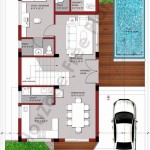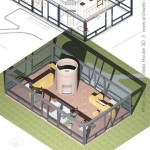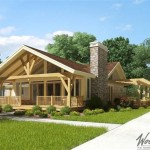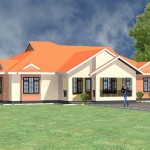Elevation of A House Plan: Essential Considerations
The elevation of a house plan refers to the vertical view of its exterior, showcasing its height, shape, and architectural features. A well-designed elevation can significantly enhance the aesthetics and functionality of a home and play a crucial role in creating a lasting impression.
Importance of Elevation
The elevation of a house plan is essential for several reasons:
- Aesthetics: It defines the visual appeal of the home and sets the tone for the overall design.
- Functionality: It influences factors such as natural lighting, ventilation, and access.
- Code compliance: Elevations must adhere to local building codes regarding height, setbacks, and other regulations.
Essential Aspects of Elevation
To create a successful elevation, architects and homeowners should consider the following aspects:
1. Architectural Style
The architectural style of the home, such as traditional, modern, or contemporary, will greatly influence the elevation's overall design and detailing.
2. Roof Shape and Pitch
The shape and pitch of the roof can dramatically alter the elevation. Gable roofs provide a classic look, while hip roofs offer a more modern aesthetic.
3. Windows and Doors
The type, size, and placement of windows and doors affect the elevation's visual appeal and functionality. Large windows can flood a home with natural light, while arched entryways add elegance.
4. Exterior Materials
The materials used on the exterior, such as brick, stone, or siding, can dramatically impact the elevation's texture and color scheme.
5. Landscaping
The landscaping around the home can complement the elevation and enhance its overall visual appeal. Trees, shrubs, and flowers can soften the lines of the building and create a cohesive design.
6. Orientation
The orientation of the home on the lot can influence the elevation. Homes that face south or west can take advantage of natural sunlight and warmth.
7. Garage Placement
The placement and size of the garage can significantly impact the elevation. Side-entry garages are less prominent, while front-entry garages create a bolder focal point.
Conclusion
Elevation is a critical aspect of house plan design that requires careful consideration. By understanding the essential aspects of elevation, homeowners and architects can create an exterior that not only enhances the home's aesthetics but also meets functional and code requirements. A well-designed elevation can elevate the home's curb appeal, create a harmonious connection with the surrounding landscape, and provide a glimpse into the interior's personality and charm.

Floor Plan Elevation Sample House Plans Building

Scheme Of The Tested Single Family House A Front Elevation B Scientific Diagram

Small House Left Right And Perspective Elevation With Ground Floor Plan Details Dwg File Simple Plans One

Pin On My Saves

How To Read House Plans Floor Building In 10 Minutes Archid

How To Read House Plans Elevations

How To Draw Elevations

Floor Plan And Elevations For The New House Wildfire Interiors

Small House Plans Home Plan 3 Bedrms 2 Baths 1355 Sq Ft 136 1017

Plan And Elevation Of The Test House A Floor Ground Scientific Diagram








